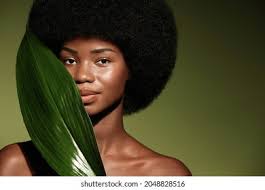Your cart is currently empty!

The Truth About Clean Beauty:
•
What You Need to Know
Understanding Clean Beauty
The beauty industry has seen a major shift toward clean beauty, with brands promoting natural, non-toxic, and eco-friendly products. However, not everything labeled “clean” is actually better or safer. Because there are no strict regulations, many products use misleading marketing tactics to appear healthier than they truly are.
At the same time, understanding clean beauty is essential for making informed choices. Consumers need to look beyond labels and recognize the ingredients that actually contribute to healthier skin and a sustainable planet.
So, what is the truth about clean beauty, and how can you navigate the industry with confidence? Let’s explore everything you need to know about clean beauty, from ingredients and regulations to greenwashing and sustainability.
Skin Rituals Around the World:
1. What Does Clean Beauty Really Mean?
The term clean beauty lacks a universal definition, leading to confusion about what makes a product “clean.” Because of this, many brands self-define their standards, making it harder for consumers to know what’s truly safe and non-toxic.
Key Characteristics of Clean Beauty:
- Non-toxic ingredients free from harmful chemicals
- Sustainable sourcing of natural and ethical raw materials
- Transparent labeling without misleading claims
- Cruelty-free and often vegan formulations
- Eco-friendly packaging to reduce environmental impact
Although clean beauty products prioritize safety and sustainability, not all natural products are safe, and not all synthetic ingredients are harmful.
2. Common Myths About Clean Beauty
Because of its popularity, clean beauty has attracted both facts and misinformation. Understanding the truth behind common myths can help you make informed decisions.
Debunking Clean Beauty Myths:
- “Natural means better” – Not all natural ingredients are safe, and some synthetic ones are beneficial.
- “Clean beauty is 100% chemical-free” – Everything, including water, is a chemical. The key is using safe ingredients.
- “If you can’t pronounce it, it’s bad” – Many scientific ingredient names sound complex but are completely safe.
- “Clean beauty works better” – While some clean products are highly effective, others may lack stabilizing agents that improve shelf life and efficacy.
Since clean beauty is not regulated, learning how to evaluate ingredients is more important than relying on marketing claims.
3. The Role of Ingredients in Clean Beauty
The truth about clean beauty is that some ingredients are better avoided, while others are unfairly demonized. Learning which ingredients to look for and avoid is essential for choosing truly safe beauty products.
Ingredients to Avoid in Clean Beauty:
- Parabens – Used as preservatives but linked to hormonal disruption
- Phthalates – Common in fragrances and may impact reproductive health
- Sulfates (SLS/SLES) – Can strip natural oils and irritate sensitive skin
- Artificial Fragrances – May contain hidden chemicals that trigger allergies
- Formaldehyde-Releasing Preservatives – Potential skin irritants found in some cosmetics
Safe & Effective Ingredients in Clean Beauty:
- Hyaluronic Acid – Provides deep hydration and improves skin elasticity
- Niacinamide (Vitamin B3) – Brightens skin and reduces inflammation
- Squalane – A lightweight oil that hydrates without clogging pores
- Aloe Vera – Soothes sensitive skin and promotes healing
- Green Tea Extract – Packed with antioxidants to fight aging and protect skin
Because understanding ingredients is the best way to shop for clean beauty, reading labels carefully is key.
4. Greenwashing: How to Spot Misleading Marketing
Many brands use greenwashing to make their products appear cleaner and safer than they actually are. Since clean beauty is not legally defined, companies use buzzwords and vague claims to attract conscious consumers.
Signs of Greenwashing in Beauty Products:
- Vague terms like “natural” or “eco-friendly” without certification
- Claims of “chemical-free” (everything is made of chemicals)
- Overuse of green packaging to suggest sustainability
- Lack of ingredient transparency
- Hypoallergenic and dermatologist-tested labels with no proof
Since marketing can be misleading, always research third-party certifications to confirm a brand’s clean beauty claims.
5. Clean Beauty vs. Organic and Natural Products
Because many people confuse clean, organic, and natural beauty, understanding the differences helps in choosing the right products.
Key Differences Between Clean, Organic, and Natural Beauty:
- Clean Beauty – Prioritizes non-toxic, safe ingredients but may contain synthetic elements
- Organic Beauty – Contains certified organic ingredients with no pesticides or chemicals
- Natural Beauty – Uses plant-based and natural ingredients, but is not always free from toxins
Since clean beauty products can include both natural and synthetic ingredients, checking ingredient lists is more important than trusting labels alone.
6. The Future of Clean Beauty: What to Expect
As consumers demand safer products, the clean beauty movement continues to evolve. Because of this, brands are working toward more transparency, better formulations, and stronger sustainability efforts.
Trends Shaping Clean Beauty in 2025:
- More regulation and transparency in ingredient labeling
- Greater emphasis on sustainable and biodegradable packaging
- Advancements in lab-grown, clean synthetic ingredients
- Increased use of AI to analyze product safety and effectiveness
- More brands moving toward cruelty-free and vegan formulations
Because clean beauty is growing, consumers should expect better choices and more accountability from brands.
Final Thoughts: Making Informed Clean Beauty Choices
The truth about clean beauty is that while it promotes safer and eco-friendly skincare, it is also full of misleading claims and marketing tricks. Because the industry lacks standard regulations, consumers must rely on ingredient research, transparency, and independent certifications.
By understanding ingredients, recognizing greenwashing, and knowing the differences between clean, natural, and organic beauty, you can make informed choices. Whether switching to clean beauty for health reasons, environmental concerns, or ethical preferences, awareness is key to choosing truly safe and effective products.



Disclosure: This post contains affiliate links. As an Amazon Associate, I earn from qualifying purchases. Read my full disclaimer HERE
